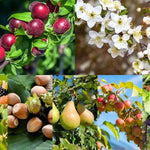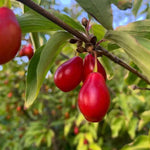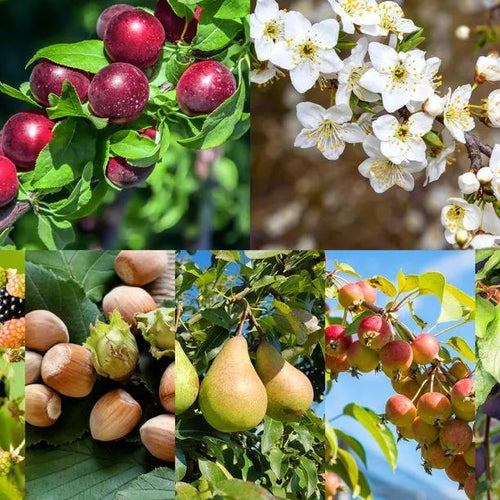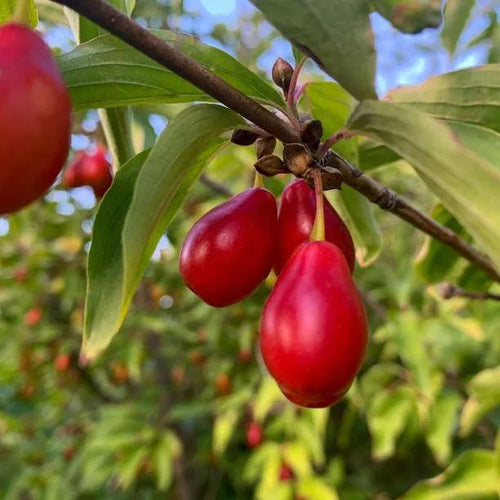 Delivered across the UK
Delivered across the UK Which Best Plant Supplier 2025
Which Best Plant Supplier 2025 1 Year Bareroot Plant Guarantee
1 Year Bareroot Plant Guarantee
About This Product
Edible Hedge Plants
This mixed hedge pack is a bundle of 50 plants that produce edible fruit and hazelnuts. You can order the same plants individually from their respective pages, but you will save money on the same size plants by buying this ready-made hedge pack.
We will choose the plants that go into the hedge mix from the following list, occasionally the pack may change between the time of ordering and the time of despatch.: we regret that we cannot accept requests for specific plants to be used in your pack. If you want to be certain of having a particular plant in your hedge mix, please order it separately; take a look at the rest of our selection of hedging plants. Although we reserve the right to substitute any of the components of this mix, it'll generally consist of:
Features
- 50% Cherry Plum
- 20% Hazel
- 10% of three chosen by us from: Crab apple, Blackberry (sometimes thornless), Wild Pear or Wild Plum / Damson, Elderflower.
These native plants will produce a good yield of fruit & nuts for eating fresh and making hedgerow jam. They'll knit together to form a stock-friendly, dense barrier hedge, ideal for planting around an allotment. A productive edible hedge will never be a tidy, formal-looking thing: it needs to be allowed to grow in order to produce a nice harvest.
For an additional crop, consider adding a medlar maiden to the sunny end of your hedgerow.
Edible hedge packs are only delivered bareroot, during winter (October - April).
The plants in this pack will be 40-60cm tall when we deliver them. All our hedge plants are measured by their height in centimetres above the ground (the roots aren't measured).
Please note: when you receive our mixed hedging packs, they'll not be already mixed and will be bunched by plant species. Please remember to mix them for best results.
Spacing an Edible hedge:
Because you will want these plants to bear lots of fruit, you can space them a bit further apart if security isn't an issue.
If you want the hedge to be secure, plant at 3 plants per metre, 33cm apart.
You could plant at 6 plants per metre in a staggered double row, with 33cm between each plant along the row and 40cm between the rows, but that's a bit pointless with this hedge mix, as the interior half of each row won't fruit at all.
If you wanted a double row, you could use (for example) a conservation hedge mix for the row that gets the least sun (or faces the road) and the edible mix for the row that gets the most sun (or faces your garden) would be better value.
Note that if your mix contains elderflower, it might be best to plant it all together at the "worst end" of the hedge (which most hedges tend to have).
Elder is exceptionally tough and tolerant of practically all conditions, and planting it in a block together at one end is often preferable to distributing it throughout the mixed hedge. Elder is a decent hedge plant, but it's a bit of a bully in the way it grows, so the more it grows into other Elders, the better.
Each pack of 50 plants will make 16 metres of single row hedge and 8 metres of double row hedge.










 Secure, One-Tap Checkout
Secure, One-Tap Checkout
 Hand Picked, Delivered to Your Door!
Hand Picked, Delivered to Your Door! 1 Year Bareroot Guarantee
1 Year Bareroot Guarantee









